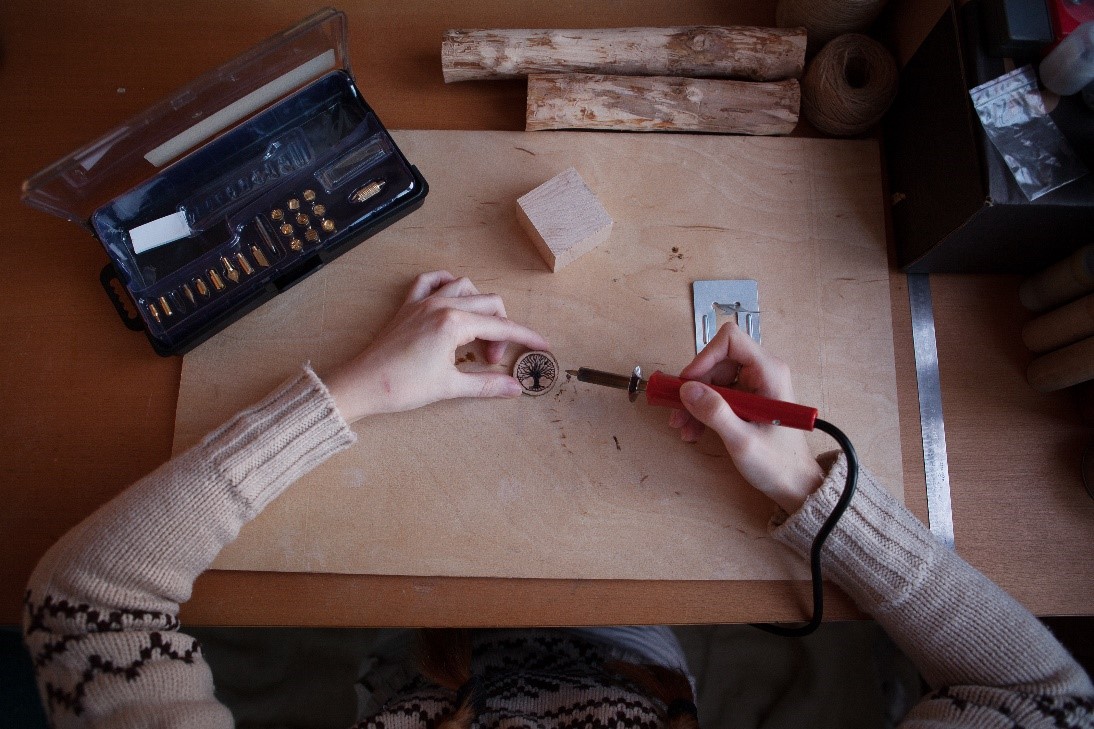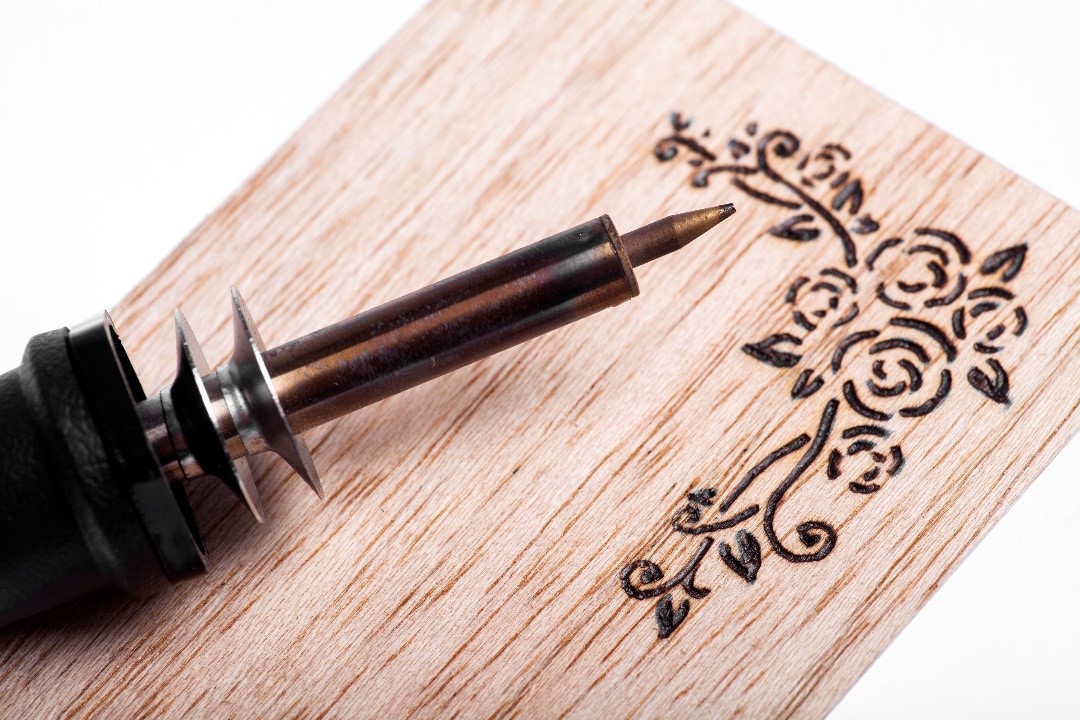The Art of Pyrography
Contents |
Introduction
Pyrography is the process of applying heat to wood to burn marks and decoration into it. By using basic tools such as a soldering iron this method can create works of art from timber.
Sometimes referred to as Pyrogravure, pokerwork or wood burning, by controlling the application of heat with such tools as a poker, a broad range of tones and shades can be applied.
The history of wooden art
The term means ‘writing with fire’ and combines the Greek pur (fire) and graphos (writing). The art of burning wood can be practised using specialised tools and equipment or a metal implement simply heated from fire, or even a magnifying lens concentrated by sunlight. It began in the 17th century, and became increasingly popular by the 19th century, in a crude form of pokerwork.
During the Victorian era, the pyrography machine sparked huge interest in woodcraft, and the term was coined. As time progressed, the 19th century saw an even bigger curiosity, and in the 20th century, the electric pyrography hot wire wood etching machine further automated the process.
Woods and pyrography
This method works best with fine grain woods such as lime, beech or sycamore, which are also best for beginners. For safety reasons, pyrography should not be practised on pressure treated woods or composite materials such as plywood or MDF.
Essentially you can use any wood for a pyrography project, although soft woods will burn at lower temperatures, while harder woods will only take to alteration from higher temperatures. A key point is to prepare your wood. If it is a raw piece of wood, you will need to sand it suitably depending on the way you want the grain. It is much easier to burn with the way of the grain.
Varying the tip, the temperature of the iron, or the way of applying it can achieve many different effects. In most pyrography, after the wood is burned, it is usually coloured. Lighter hardwoods, like sycamore, basswood, birch and beech are a common wood to be used as the fine grain is not obtrusive.
Characteristics of wood in pyrography
The wood you choose in pyrography can change the finished effect. From the hardness, to the grain, figure, texture and colour, the classification of wood will affect the art. Softwood burns faster than hardwood, so do not require the marker to be as hot.
The grain is the direction of the fibres in the cells of the wood - it is important to sand with the grain. It is a key factor, as it can cause deviation when using a woodturning pen unless pressure is applied.
The figure is the natural design or pattern visible from the cut surface of the wood. This should always be taken into consideration when planning your pyrography design. The texture of the wood can also change your planning.
Whether a beginner or an expert, you should avoid creating intricate designs on uneven or coarse wood textures. Wood-burning should simply enhance the natural beauty of the wood, so try not to hide the natural texture, or grain if possible.
Related articles on Designing Buildings
Featured articles and news
Ebenezer Howard: inventor of the garden city. Book review.
Grenfell Tower fire – eight years on
A time to pause and reflect as Dubai tower block fire reported just before anniversary.
Airtightness Topic Guide BSRIA TG 27/2025
Explaining the basics of airtightness, what it is, why it's important, when it's required and how it's carried out.
Construction contract awards hit lowest point of 2025
Plummeting for second consecutive month, intensifying concerns for housing and infrastructure goals.
Understanding Mental Health in the Built Environment 2025
Examining the state of mental health in construction, shedding light on levels of stress, anxiety and depression.
The benefits of engaging with insulation manufacturers
When considering ground floor constructions.
Lighting Industry endorses Blueprint for Electrification
The Lighting Industry Association fully supports the ECA Blueprint as a timely, urgent call to action.
BSRIA Sentinel Clerk of Works Training Case Study
Strengthening expertise to enhance service delivery with integrated cutting-edge industry knowledge.
Impact report from the Supply Chain Sustainability School
Free sustainability skills, training and support delivered to thousands of UK companies to help cut carbon.
The Building Safety Forum at the Installershow 2025
With speakers confirmed for 24 June as part of Building Safety Week.
The UK’s largest air pollution campaign.
Future Homes Standard, now includes solar, but what else?
Will the new standard, due to in the Autumn, go far enough in terms of performance ?
BSRIA Briefing: Cleaner Air, Better tomorrow
A look back at issues relating to inside and outside air quality, discussed during the BSRIA briefing in 2023.
Restoring Abbotsford's hothouse
Bringing the writer Walter Scott's garden to life.
Reflections on the spending review with CIAT.
Retired firefighter cycles world to raise Grenfell funds
Leaving on 14 June 2025 Stephen will raise money for youth and schools through the Grenfell Foundation.
Key points for construction at a glance with industry reactions.
























